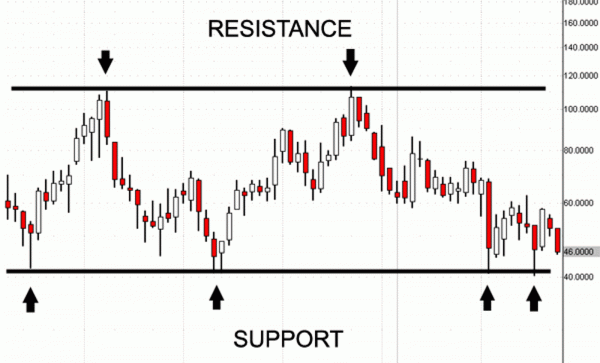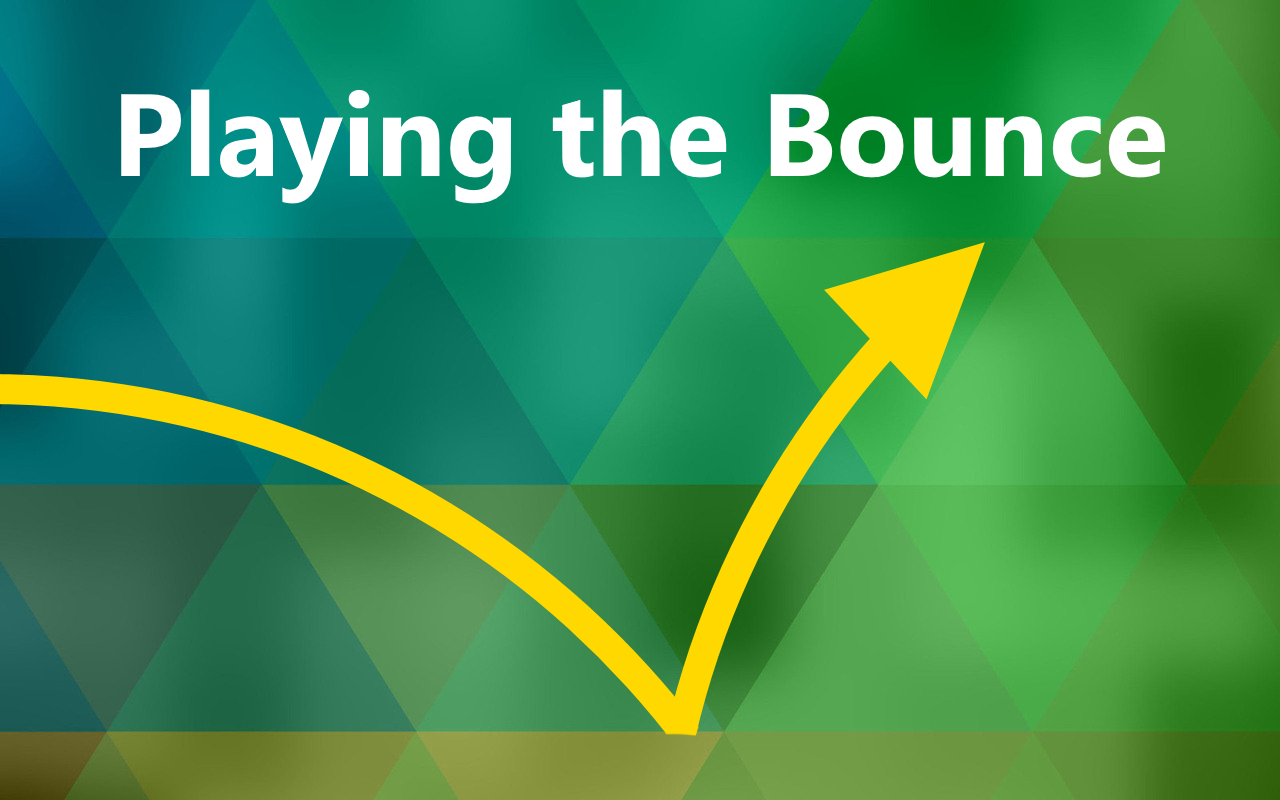Many of the most profitable stock trades occur during a Market Bounce. When it comes to balancing risk and reward, bounce plays give us a low risk entry and a clearly defined point at which to exit if needed. Below you will learn how to navigate a Market Bounce stock trade and increase the probability of your success.
Support and Resistance
To better understand bounce trades, let’s briefly examine a common market phenomenon called Support and Resistance. Stock trader Dr. Alex Elder gives a simple, but effective image of support and resistance:
“A ball hits the floor and bounces. It drops after it hits the ceiling. Support and resistance are like a floor and a ceiling, with prices sandwiched between them.”
When a stock price has fallen to a level where demand increases, buyers begin to buy. This creates a “floor” or support level. When a stock price rises to a level where demand decreases, owners begin to sell to lock in profits. This creates a “ceiling” or resistance level.
The “floor” and the “ceiling” are not fixed barriers that you can touch. They are flexible, psychological barriers created by the sentiment and actions of all stock traders in the market.
How To Recognize Support and Resistance
It’s relatively easy to identify Support and Resistance on a stock chart. For example, to find a Support level, look for a series of low points where a stock falls to a certain price but then doesn’t fall any further. This is a support level. When you find that a stock rises to a certain high, but no higher, you have found a resistance level.

Playing the Market Bounce
When the stock market bounces upward after a period of decline, our goal is to buy individual stocks that meet our standards as they begin to bounce up from Support with the larger market. Sounds simple enough when we are comfortably looking in the rearview mirror, but it can be quite challenging and time consuming to find trades with the potential for high profits.
The RightLine Report provides subscribers a steady supply of bounce trades and delivers a variety of other trades selected to perform in any market conditions.
Setups and Triggers
Every trade you enter should have two key ingredients – a setup and a trigger. A Market Bounce setup obviously contains a potential bounce from a support level. Identifying and selecting a trigger requires that you predetermine an entry point based on price action that confirms a bounce is actually underway.
The Trade Setup
The setup is the basic conditions that must be present in order to consider entering a trade. If you’re targeting bounce plays, then a bounce needs to be present. You should define what a tradable bounce is. This will help you avoid losses when a bounce isn’t there. Think of the “setup” as your reason for trading.
The Trade Trigger
When your reason for trading is present, you need a precise event that tells you that the time has come to enter the trade. When a stock begins to bounce, some moments and price points within the early phase provide better trade opportunities than others.
Time Frame
Bounce Trades are typically available in different time frames. Some people prefer to buy and hold a stock for a brief period, while others choose to be in a position for a longer term.
A shorter-term trade requires a quicker trigger than a longer-term trade because the profit target is smaller and will be reached sooner. On the other hand, a longer-term trader will set a higher trigger, raising the odds that the bounce will continue over a longer period of time.
Use Stop-Loss Orders To Prevent and Minimize Losses
A stop-loss order is an order placed with a broker to buy or sell a stock when it reaches a certain price. Stop-loss orders – also called “Stops” – are designed to prevent or limit an investor’s loss on a position.
Always use Initial Stops to protect against losses, and then apply Trailing Stops to lock in profits as the trade moves favorably.
Using The RightLine Report To Play The Stock Bounce
Every issue of The Report contains high-potential stocks with detailed Bounce Play instructions. This efficient time-saving resource always includes Entry and Exit details for all stock setups, triggers, plus Initial and Trailing stops.
A subscription also gives full access to all Member Areas of our website, including the RightLine Risk Control System and Position Size Calculator.
Place your order now for extra savings!

